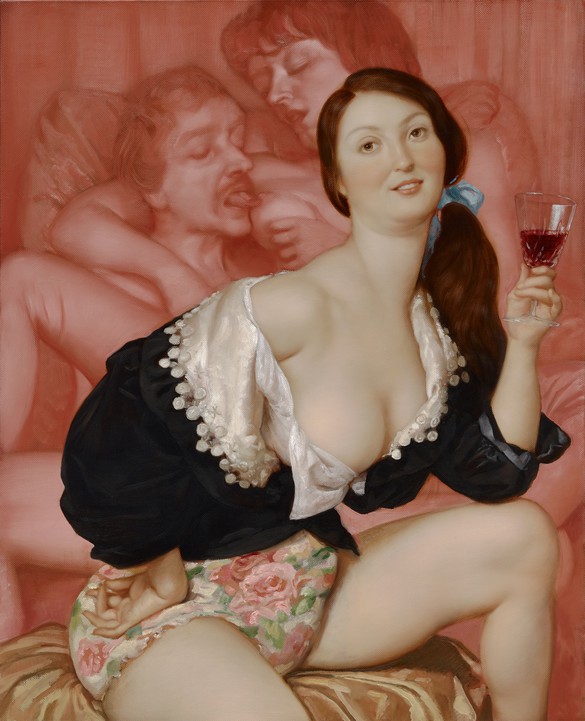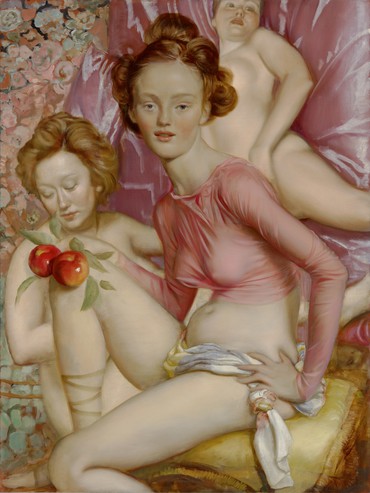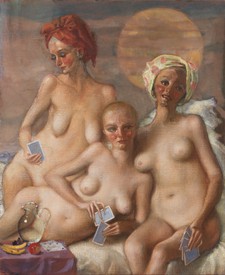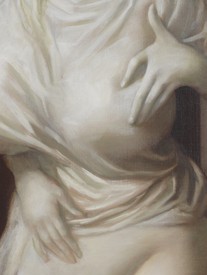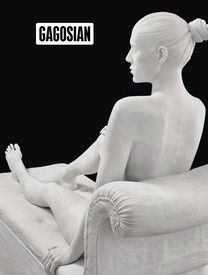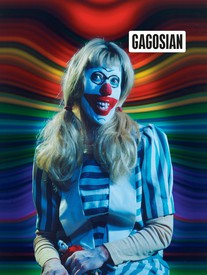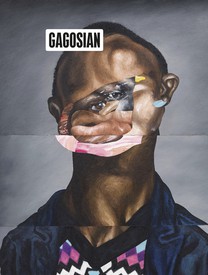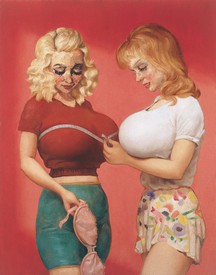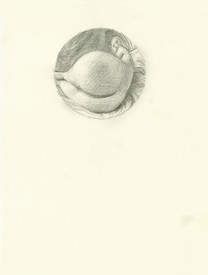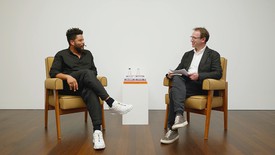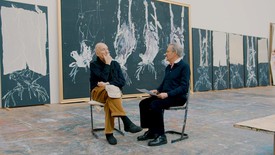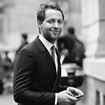
Derek Blasberg is a writer, fashion editor, and New York Times best-selling author. He has been with Gagosian since 2014, and is currently the executive editor of Gagosian Quarterly.
Derek BlasbergYou just opened an exhibition of new paintings in Beverly Hills, which I think is an interesting setting because, in addition to the presence of the film industry, there is a pinup culture in LA, which seems to have had an influence on your work.
John CurrinYes, movie imagery has had a pervasive visual influence on my work. There is a painting of a reclining nude in the show, which of course is a traditional subject for figurative painting, but we nicknamed this work “Billboard,” because the figure seems to command the presence of demanding a billboard all to herself. What is the name of that woman in LA who used to buy herself billboards to get work as an actress?
DBAngelyne! She’s a legend in LA, and she still drives around in a hot pink Corvette.
JCWell, I must have seen one of her billboards once when I was a kid and it stuck with me. The dimensions of my painting relate proportionally to the billboard format and there is subdued color, which gives the work a classical feel, but I then mixed in lace collars, garter belts, and sort of cheap-o touches within it, to push it towards something more tawdry. As it emerged, the painting took a turn away from pinks and toward grays, blacks, browns, and reds. I consciously thought about LA with that piece. The thing with LA is that it makes me think there’s no reason not to make pretty paintings. But the older I get, the more I realize that when you consciously decide to make a pretty painting, that is when you lose a bit of control. If you try to moderate the emotional persona in a portrait, you actually lose control of it. In a way, that’s like LA too.
DBLet’s talk about your process. How does a work take shape? Do you picture a figure or a face or a composition?
JCThere isn’t a traditional formula. A lot of times something good happens that makes me realize other things should have happened first. Almost like I built the top floor before the foundation. I have a few formulas that work consistently for me. For example, if I want to make flesh, I have a cold version and a warm version that I know how to make.
DBAre you inspired by traditional drawing? What role does it play in your process?
JCTo be honest, I’ve never much liked to draw. Or at least I don’t think I draw in a particularly fluid way. And perhaps it is simply that I would always just prefer to paint. Of course drawing is a very necessary element in a good painting, often it’s even a blueprint for what you’re going to do. But I’ve always been more interested in paint.
DBBut even in your personal history, it took you some time to be comfortable as a figurative painter, to accept yourself as that. In fact, at the lecture you gave at the Getty Center last year, you made a funny joke about how faking Francis Bacon paintings got you into art school.
JCHa! Actually, my progression was fake Bacon, fake Salle, fake de Kooning, fake Kippenberger, and finally fake Schnabel. Then I was out of school and I had to think of something else.
DBWas that because figurative painting wasn’t considered cool?
JCPartly. But also, like anyone else, I was young. I looked up to the glamour of the New York school, and all the people that I ripped off. I can remember seeing a Kippenberger show pretty early on in the ’80s, which was amazing. And I thought, “I want to do stuff like that.” Only later did I have to admit it’s not really in me to do that. When you’re twenty, though, you’re a chameleon and you’re still figuring out what you want to do. Even today, if you wanted to be a young figurative painter you may be discouraged because there’s some other new movement that seems more compelling.
DBYour influences and sources can be quite varied: Sears catalogs, pinups, pornography, Norman Rockwell paintings, covers of old fashion magazines. Somehow, it all seems very American too.
JCThere’s not really much of a critique of American culture in my work. At least not in a systematic way.
Artwork © John Currin
